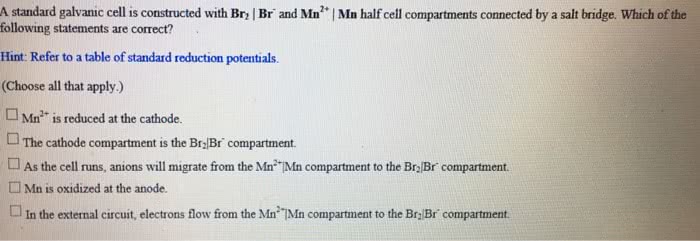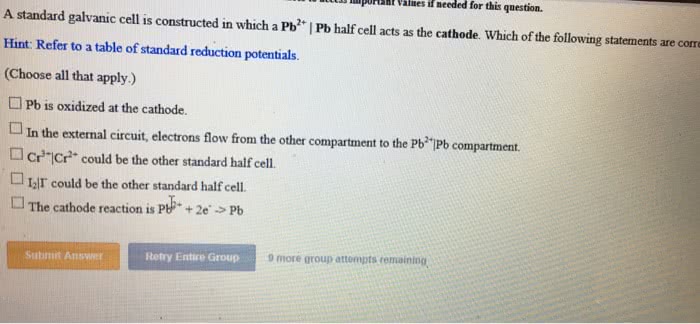CHM 142 Lecture Notes - Electrochemical Cell
Document Summary
Electrochemical cell apparatus that converts chemical energy into electrical work or vice versa. Reduction and oxidation half reactions are in separate compartments linked by an external circuit. Cell diagram symbols that show how the components of an electrochemical cell are connected. Electrons flow from anode (-) (oxidation) to cathode (+)(reduction) via external circuit. A salt bridge connects the two compartments. Standard reduction potential (ered ) potential of a reduction half-reaction in which all reactants and products are in standard states. Reference: standard hydrogen electrode (she: 2h+(aq) + 2e- h2(g) ered =0. More positive value, greater the likelihood for reduction. A cathode can still have a negative value, because it is all relative to she. Whichever is more positive is the cathode (greater reduction potential) Si unit of electrical current is the ampere (c/s) Electrolysis process in which electrical energy drives a nonspontaneous chemical reaction. External source of electrical energy does work on chemical system, turning reactants into higher-energy productes.




